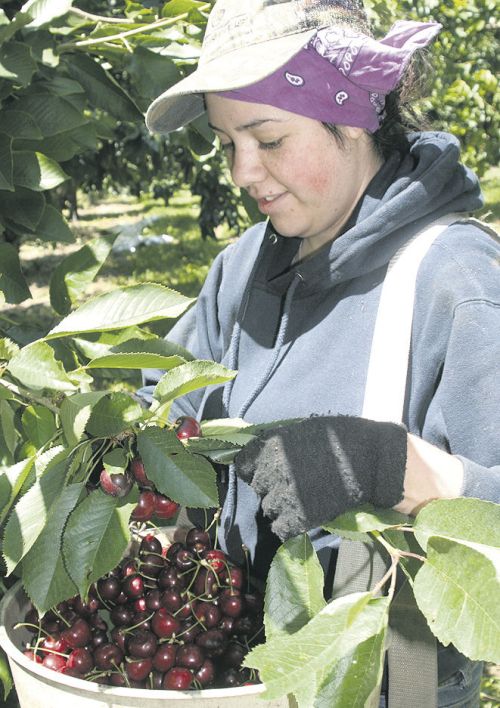Debate continues over cherry crop insurance
Published 8:57 am Thursday, February 21, 2013

- Dan Wheat/Capital Press Anna Garcia picks Bing cherries in an East Wenatchee, Wash., orchard last summer. As the industry faces larger crops there's debate over whether crop insurance contributes to market gluts.
Kershaw warns insurance will be the death of cherries
By DAN WHEAT
Trending
Capital Press
YAKIMA, Wash. — Crop insurance should not be blamed for gluts in Washington’s sweet cherry market, an official of a Yakima fruit company says.
But the president of another firm stands by his criticism of the program, which he voiced more than a month ago at an industry meeting.
The Actual Revenue History Cherry pilot insurance plan administered by the USDA’s Risk Management Agency is working well and is a good risk management tool, said Marvin Lapp of Washington Fruit and Produce Co.
The problem is simply overproduction and too many small cherries, Lapp said.
“Growers need to target growing only large fruit size that is more acceptable in the market,” he said.
Trending
When too much fruit, particularly if it is small or poor quality, hits the market, consumers quit buying and prices tumble, speakers said at last month’s Cherry Institute meeting of Northwest Cherry Growers.
One of the speakers, Robert Kershaw, president and CEO of Domex Superfresh Growers, Yakima, said that crop insurance will be the death of cherries. Growers keep picking when the market is lower than picking costs so they can make insurance claims, he said. It will lead to only packers making money and growers settling for insurance money, he said.
But Dave Paul, director of USDA Risk Management Agency in Spokane, said growers do not have to pick and send fruit to warehouses to file claims.
Insurance company adjusters appraise unharvested marketable production in the field, he said. If some of the fruit has been run on a warehouse line, the value is based on that, he said. If no production has been run and sold, then the unharvested marketable production is valued by an average state price.
Growers are compensated, he said, if their revenue from appraised and harvested marketable fruit falls below their historical average multiplied by their coverage level — the deductible — or if they have damaged fruit.
The maximum a grower can insure for is 75 percent of their historical average minus whatever they would have gotten had the fruit gone to market so there’s no incentive for them to rely on insurance money, Paul said.
But Kershaw said a lot of volume was picked from July 15 to Aug. 5 last summer “in a very bad market that I believe would not have been picked without the insurance program.”
The program needs to be addressed for the long-term health of the industry because it hinders the free market, he said.
Oversupply in one year doesn’t mean permanent oversupply because it can be used to build future markets, Kershaw said.
A marketer from another company said some grower-packers pack too much small fruit to get what they can for it and then file insurance claims for the remainder of the amount up to their historic revenue average.
Lapp said he’s not sure that happens but sometimes packers tell growers to keep picking even when they know they should stop because the market is bad from too much small fruit.
They keep going, Lapp said, because they want to make money and are thinking of their own interests above the greater good of the industry.
It’s possible such things happen, but if the program in any way adversely affects the industry, the agency wants to correct it, Paul said.
ARH may keep growers with chronically small or poor fruit in business a few more years than without it but it can’t sustain them for the long haul because it is based on their revenue history, which will keep going down, Lapp said.
ARH began in 2009, has received positive comments from the industry and is being continued as a pilot before eventually being made permanent or eliminated, Paul said.
Participation has increased and loss payments have decreased from 2009 through 2012, Paul said.
In 2011, 74 percent of the state’s eligible cherry acres were insured for $189 million with $8.2 million in loss payments, he said.
The agency wants to provide growers meaningful revenue protection, not encourage over production, Paul said. The program reduces risk and helps those with losses continue, but it’s hard to see how it would encourage growers to plant more, he said.









